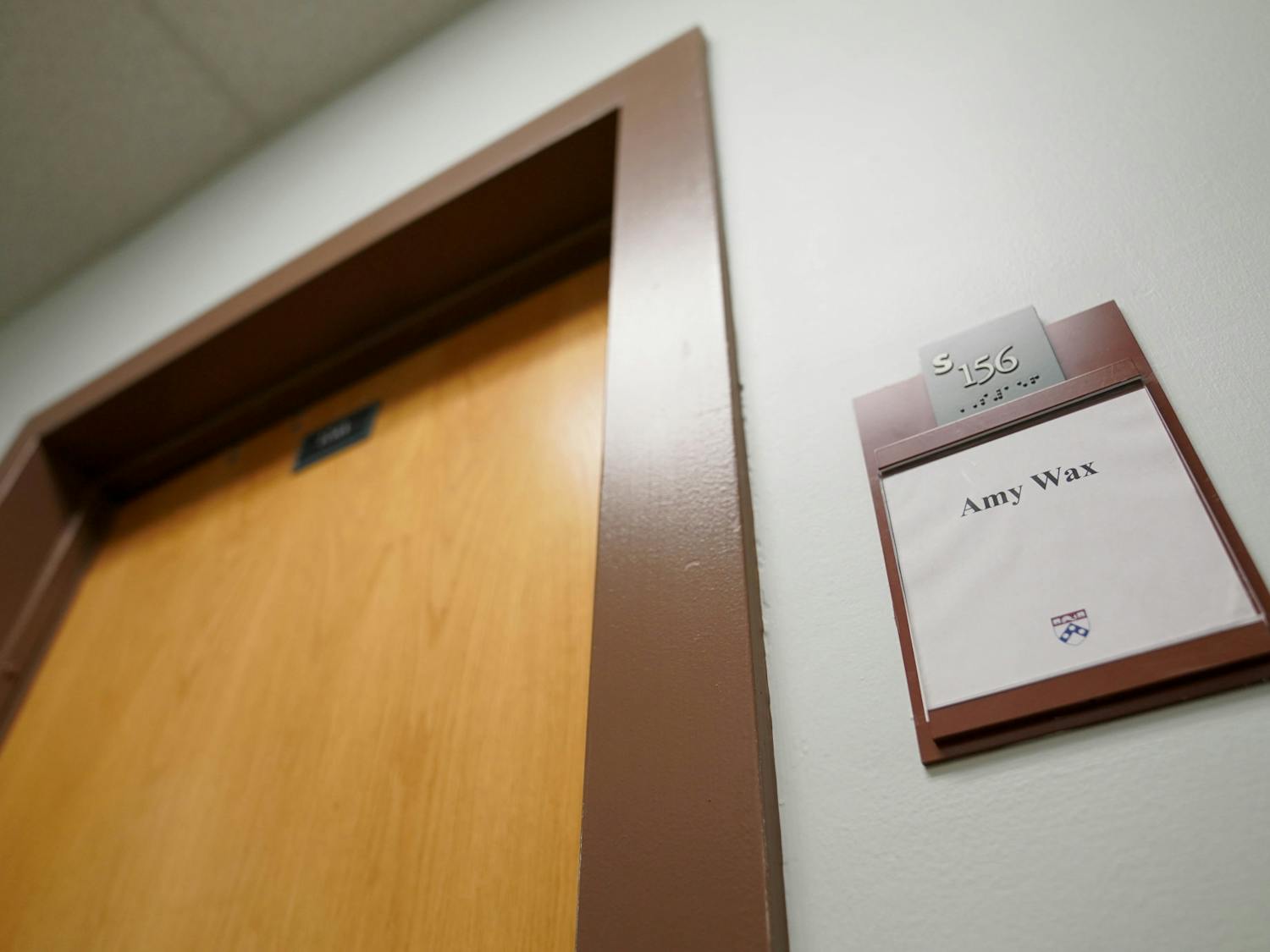Harvard University's campus has Dudley and Dunster. Penn has Harrison and Harnwell.
The University's housing system may outwardly resemble that of its Ivy League counterparts, but there are significant differences between on-campus living at the institutions.
A need for change
Housing on Penn's campus was once a messy affair.
Before 1997, Penn's housing system was unstructured and considered confusing by many faculty and students.
"It wasn't as if you could give anyone a brochure," Harnwell College House Faculty Master David Brownlee says of the housing system at the time.
The campus was a mix of legitimate college houses, "living-learning" programs, programs for upperclassmen and specific first-year residences.
Some programs had resident advisers but no graduate associates; others were supervised by assistant deans but had no faculty fellows. But perhaps most importantly, many students did not feel part of a community or at home on campus.
Brownlee notes that those familiar with the system had lobbied for change but that a feasible plan had never been devised.
On-campus housing was minimal until the 1960s and 1970s, when the the three high rise dormitories and other residences such as Mayer Hall and Hill House were built.
In fact, housing was so sparse at Penn in the 1950s that the University was often viewed as a commuter school, Brownlee says. When the Quadrangle was completed in its present form in the early 1950s, it represented the primary dormitory on campus. A few others existed, but most were smaller, older buildings that housed many fewer students than the high rises do today.
Brownlee and a committee of University faculty and administrators known as the Residential Faculty Council drew up a plan in 1996 to reform the housing system.
The plan attempted to simplify campus living by expanding student support beyond the classroom with an advising system in each residence, establishing permanent, in-house computing help and standardizing residence fees.
The new system appeared similar to those that existed at Harvard and Yale universities, where many students report forming close ties to their residences. The universities offer students housing for four years, often in the same residences, and many campus events revolve around the different college houses.
However, Penn's system had some distinct differences. The foremost of these was very recent inception; Harvard and Yale's college house programs began in the 1930s. Therefore, Penn's college house system was tailored to students with modern attitudes and sentiments about housing.
"People in their early 20s want privacy," Brownlee argues, adding that students "hadn't voted with their feet in favor of living in a summer-camp environment."
Brownlee wanted students to have their independence and was doubtful about forcing students to stay in the same house, or even simply on campus, for four years.
The mission and principles of the new system specifically called for a variety of housing choices, as well as houses that would be available to students regardless of age and clear distinctions between the different residences, Brownlee said.
From the formulated plan, the College House system at Penn was born.
Creating a community
"I absolutely have noticed that there's a greater sense of community," Hamilton College House Dean Tabitha Dell'Angelo, who attended Penn and served as a graduate associate in Hamilton, says of housing at Penn.
She believes the houses appear to be "very family-oriented" compared to when she lived in them.
"I really think there are more and more kids staying on campus," she says. "It feels like home."
However, the three high rise dormitories -- Hamilton, Harrison and Harnwell college houses -- have been criticized by some for being too large to maintain a sense of community, especially with residents coming from all graduating classes. Harnwell, for example, has a total of 731 residents, while Spruce College House has just 462.
College Houses and Academic Services Faculty Director Philip Nichols recognizes some of the potential problems inherent in the larger buildings.
"They are easy to criticize, and they are pretty big, but they do offer an enormous amount of opportunities to their residents," Nichols says. "They are growing into their role as college houses, and I hear from more and more people every year about how much they love their communities there."
He acknowledges that the high rises do offer a different experience from that of the other college houses, but writes in an e-mail, "one of the advantages of our system is that a student is allowed to choose to have four different experiences in [his or her] four years here."
And although some of the smaller houses -- which usually house freshmen -- can offer a more close-knit feeling, that does not necessarily translate into more students choosing to live on campus.
"One of the things that [Hill] prides itself on is the tight-knit community that is created in the house," Wharton freshman Justin Anderson, a Hill resident, writes in an e-mail interview.
"I personally feel really close to my suitemates and with my housemates," he says, "but I don't think the same could be said about the other college houses."
Still, Anderson has decided to live off-campus next year.
"I will be living with friends because we decided we would benefit from the freedom and independence," he says.
The missing ingredient
With the closing of Stouffer Dining Hall in 2001 and continual criticism of the meal plan offerings, many students also see the state of Penn's dining options as a deterrent to staying on campus.
"I love that kind of criticism; it pushes us to do more," Brownlee says.
He has high praise for every aspect of the housing system, but he admits a solution to the dining problem is still out of reach.
"Dining is a trickier thing," he says. "I do think we are deficient."
In Brownlee's dream world, each of the high rises would have its own dining hall, and Penn would add evening dining for freshmen to Houston Hall.
The housing system's sense of community, he says, "hasn't translated into dining."
Nichols also finds the dining issue puzzling.
"Meals are a very important part of creating relationships and maintaining community," he says. "Yet here at Penn ... we have a culture of eating truck food on the run. ... It worries me a bit."
Shortages and opportunities
Brownlee and Nichols are also concerned about the number of rooms offered by the housing system.
"We have a wait list of many hundreds of people hoping to get into college houses, and demand becomes more intense every year."
Only 60 percent of all undergraduates can currently be accommodated in on-campus housing.
"Obviously, we need more beds on campus to fulfill the demand," Nichols says. "... 40 percent of our students are commuters who come to campus to attend class and do their activities and then go home to Beige Block."
But Nichols acknowledges that adding more beds could cost "hundreds and hundreds of millions of dollars."
Dell'Angelo also noted students are having a tougher time in the housing lottery with more and more students applying for rooms.
"Now there's tons of kids who can't get what they want," she says.
Students desiring more on-campus housing, however, could soon get what they want.
In contrast to the creation of the College Houses in the '90s, the University has a chance to build new student communities from the ground up with the purchase of the 24-acre postal lands east of Penn's campus.
Whether Penn plans to use the space for dorms has not yet been decided.
A pattern of success
The housing system has changed drastically in a short amount of time, even if there is still more to be done.
DuBois College House Dean Patricia Williams lauded the work of Penn house deans in trying to create a family-like community.
"I don't know how they manage sometimes," she said of deans who advise larger facilities.
Williams can organize housewide events due to the smaller population of DuBois and finds it easy to create a sense of community within the house. She notes that a large number of students stay in DuBois for four years and often become house leaders who pass traditions down among the residents.
Housing advisers across campus "are making a real effort; it's just going to take a lot more work," Williams says.
But in terms of time, Nichols argues the system has made huge strides.
"The initiative has been wildly successful ... astonishingly successful," Nichols says.
Despite the fact that some aspects of the original plan have yet to be achieved, the College House system has gained significant ground.
The houses "have become deeply embedded in the culture of Penn. ... That says something," he says.
Yale's college house system thrives thanks to long history, support from student body
Yale created a system of 12 houses, called residential colleges, more than 70 years ago.
Students there often live in the same college for four years, in addition to eating together in communal dinning halls. The colleges have an average of 400 students each, who live in suites with shared bathrooms on co-ed floors.
There are pranks and rivalries among the residential colleges, and students feel closely connected to their colleges.
"Students identify very strongly with their residential college," Yale spokeswoman Gila Reinstein said. It is "a very important source of identity."
"The system is so good that almost no one wants to live off campus," despite the fact that housing off-campus is convenient and inexpensive, she said.
Yale senior Zander Cote -- a resident of Jonathan Edwards College -- agreed that the residential system promotes a family-like atmosphere.
"It actually really does function the way they say it does," Cote said. "A great number of people ... are very, very attached to their college."
Yale students remain active members of their initially assigned colleges, regardless of where they choose to live. Cote now lives off campus.
"Almost all of my friends are in my residential college," he said.
"It's the first people that you meet ... your main social group."
But Yale's system still has its downsides.
"Living off campus is way cooler," Cote said. "Most parties that are worth going to are off campus."
He said his college participated in traditional rivalries but that he personally found most of the pranks to be unappealing and rooted in a "mild-mannered, upper-class, Anglo-Saxon kind of humor."
Cote also noted that off-campus housing is not only less expensive, but it also allows him to cook his own food instead of being forced to buy a meal plan.
Students who choose to live in their residential college for all four years are forced to buy meal plans.








